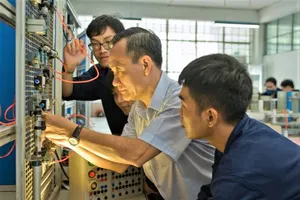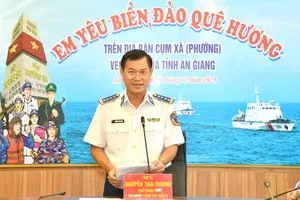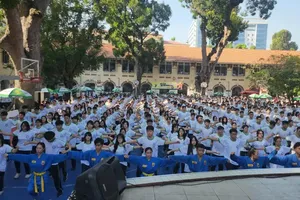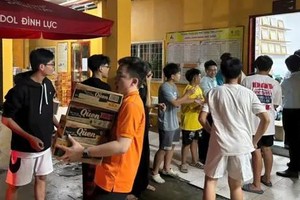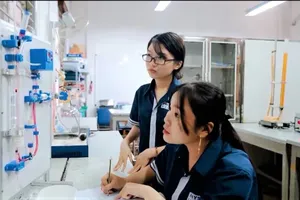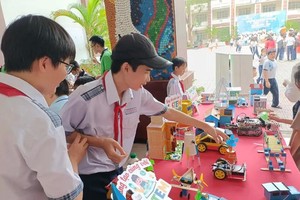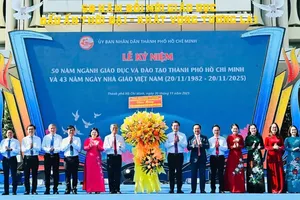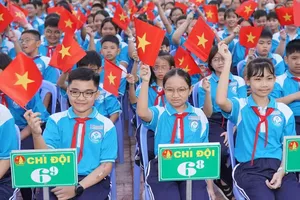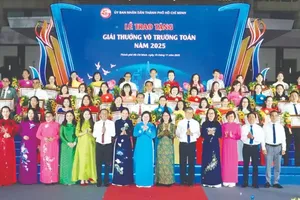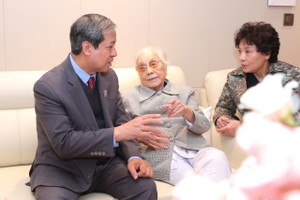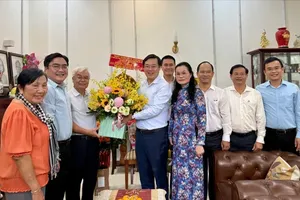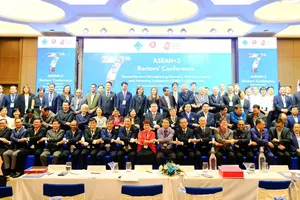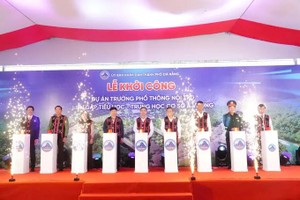
According to Prof Su Dinh Thanh, President of HCMC University of Economics, the new HCMC will be incapable of implementing modern mechanisms should it lack a cadre of personnel with proven capabilities in technology and innovation (as stipulated in Resolution No. 57).
It will also be unable to capitalize on global integration without talent possessing a profound understanding of international markets, particularly within the context of HCMC’s ambition to forge deep international integration (Resolution No. 59-NQ/TW).
Institutional reform will be unattainable without officials who are well-versed in modern jurisprudence (Resolution No. 66-NQ/TW), and the city cannot foster the private economy as a primary engine of growth without dynamic entrepreneurs and experts, accompanied by suitable, supportive policies (Resolution No. 68-NQ/TW).
Consequently, the pivotal role of human resources for the new HCMC can be articulated through three principal cohorts:
- a team of technology and innovation experts to steer the digital transformation revolution;
- a cohort of entrepreneurs with comprehensive mastery of legal frameworks and both international and domestic markets to generate breakthroughs for the private economy;
- a dedicated corps of officials and civil servants at every level who thoroughly comprehend the new urban orientation and can effectively operate its bespoke special mechanisms.
“In the context of the new HCMC developing according to a multi-polar growth model, human resources must transcend deep specialization to embrace systemic thinking that fuses a global perspective with local execution capabilities. They must possess the ability to integrate interdisciplinary knowledge, resolve complex problems, drive innovation, and adapt with exceptional speed to the environment of a digital economy, a smart city, and the imperatives of sustainable development. Essential to this is a spirit of unceasing learning, a proactive willingness to adapt and evolve in concert with change, and the flexibility to align with the specific functions of each zone within the new urban landscape.”
Prof Su Dinh Thanh, President of HCMC University of Economics
According to President Tran Dinh Ly of Nong Lam University – HCMC, the new HCMC is envisioned as a “super-integrated” region, synergizing high-tech industry from the former Binh Duong, logistics and seaports from the former Ba Ria-Vung Tau, and the financial hub of the original HCMC core. The convergence of these components aims to create Vietnam’s first true “smart megacity”.
Realizing this vision requires two key actions, namely substantial investment in high-quality human capital, particularly young intellectuals, and treating education as well as R&D as strategic “soft infrastructure”, giving it investment priority equal to that of physical infrastructure.
According to Assoc Prof Dr Quach Thanh Hai, Vice President of HCMC University of Technology and Education, the city itself serves as the ultimate laboratory where initiatives from the state-academia-enterprise linkage can be rigorously tested and can make substantive contributions to the city’s progress in an era defined by sustainable development.
Therefore, the municipal authorities ought to invest in robust training programs designed to enhance the capabilities of its leadership, management, expert, and civil servant cadres, tailored to the realities of an expanded urban geography and a new institutional architecture. The universities, having been steadfast partners in HCMC’s development over the past five decades, will persist in their active contribution to this new phase, playing a vital role in enabling the city’s powerful ascent in the future.
President Phan Hong Hai of the Industrial University of HCMC affirms that training high-quality human resources is the university’s core mission. Their strategic plan to 2045 prioritizes designing curricula directly linked to industry needs, focusing on HCMC's key sectors like technology and finance, while also creating new programs for emerging fields like semiconductors and fintech.
Furthermore, the university is intensifying its collaboration with the corporate sector and government. This three-way partnership aims to collectively forecast, plan, and develop the human resource base required to power HCMC’s future as a smart city, knowledge economy, and sustainable urban center. This ensures the workforce is not just educated, but purpose-built for the city’s strategic ambitions.
In the view of Assoc Prof Dr Vu Hai Quan, President of Vietnam National University-HCMC, the tripartite cooperation model of the State, Academia, and Enterprise has been designated as the “strategic triangle”, representing the very core of the national innovation ecosystem.
Within this framework, the State (HCMC) assumes the foundational role of architect and enabler, establishing the institutional framework, directing investment, and providing land, infrastructure, and preferential tax and financial policies to research organizations and businesses.
Academia functions as the primary generator of knowledge, the provider of intellectual capital, the conductor of fundamental research, and the developer of applied solutions.
Enterprises hold the crucial position of commercializing research products, translating innovation into practice, disseminating value throughout the market, sponsoring applied research, and commissioning specific research projects from universities.
These three parties operate under the guiding principle of “co-design, co-implement, and co-share value”. They jointly participate in formulating research objectives and equitably share the financial benefits derived from the application of the results. When this “strategic triangle” operates with full efficacy, the new HCMC will successfully actualize its ambitions for breakthrough development.
Chairman Le Tuan Anh of the University Council of Thu Dau Mot University stressed that the merger with HCMC is an immense opportunity, acting as a powerful catalyst for science and technology development in the former Binh Duong education system. It allows his university to leverage HCMC’s established scientific hub.
For the university, this is magnified by the expanding urban space and rising demand for high-tech talent, driven by national digital transformation resolution No.57-NQ/TW. To capitalize on this, it has launched a long-term development plan. This roadmap orients our university toward applied, high-quality training and research, specifically designed to meet the new HCMC’s significant human capital demands.
Head Nguyen Pham Hoan My of Recruitment and Training, Nitori Co. Ltd., recommended a deeper link between enterprises and training institutions.
As an FDI company with 4,200 employees, Nitori has long struggled to recruit high-skilled technical and office staff from the limited local talent pool in the former Ba Ria-Vung Tau Province. Since the July-1 merger, the distance to HCMC’s deep talent reservoir has effectively vanished. This immediately diversifies the candidate pool, shortens recruitment times, and is a prerequisite for our goals in automation and quality improvement.
Looking ahead, she anticipates policies that foster deeper integration between industry and education through internships and collaborative training. Furthermore, practical support like social housing, convenient inter-regional transport, and tax incentives will serve as a crucial lever to attract and retain the local long-term workforce essential for future growth.




